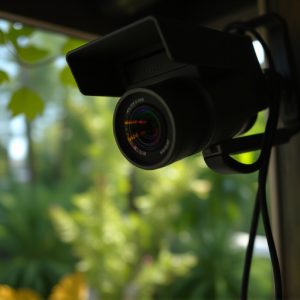Spy Camera Detection: AI Integration for Enhanced Privacy
In today's digital landscape, Spy Camera Artificial Intelligence Integration offers a revolutio…….
In today's digital landscape, Spy Camera Artificial Intelligence Integration offers a revolutionary solution to protect privacy and security. Smartphone apps powered by advanced AI algorithms analyze visual patterns like lens shapes, resolutions, and heat signatures to detect hidden cameras with remarkable accuracy. This technology raises awareness, enables proactive precautions, and drives developers to create robust security measures, fostering a digital environment where privacy is paramount through continuous advancement in machine learning.
Uncovering hidden spy cameras has become a critical concern in today’s digital age. With the proliferation of advanced technology, malicious actors employ subtle spy camera lenses, making traditional detection methods inadequate. This article delves into the innovative solution of Spy Camera Artificial Intelligence Integration. We explore how AI enhances lens detection capabilities, ensuring privacy and security. By understanding the need for advanced technology, we can navigate the digital landscape with greater confidence, knowing our personal spaces are protected from covert surveillance.
- Understanding Spy Camera Lens Detection: The Need for Advanced Technology
- Artificial Intelligence Integration: Enhancing Spy Camera Lens Detection Capabilities
- Implementation and Future Prospects: Ensuring Privacy in the Digital Age
Understanding Spy Camera Lens Detection: The Need for Advanced Technology
In today’s digital age, the proliferation of hidden spy cameras poses a significant threat to privacy and security. Understanding spy camera lens detection is crucial, as it empowers individuals to identify potential surveillance devices in their surroundings. Traditional methods often rely on manual inspection or specific lighting techniques, which can be limited and time-consuming. This is where Spy Camera Artificial Intelligence Integration steps in as a game-changer.
Advanced AI algorithms, when integrated into smartphone applications, have the capability to detect subtle anomalies that may indicate the presence of spy cameras. These technologies utilize machine learning models to analyze visual patterns, identifying characteristic lens shapes, resolutions, and even the heat signatures of hidden cameras. By leveraging the power of AI, users can quickly scan environments with their phones, ensuring enhanced privacy and peace of mind in public spaces or private settings.
Artificial Intelligence Integration: Enhancing Spy Camera Lens Detection Capabilities
The integration of Artificial Intelligence (AI) has significantly revolutionized spy camera lens detection, enabling smartphones to become powerful tools for identifying hidden cameras. AI algorithms can analyze visual data with remarkable accuracy, detecting subtle patterns and anomalies that may indicate the presence of a spy camera lens. These intelligent systems are trained on vast datasets, learning to recognize various camera types, shapes, and signatures, which makes them highly effective in diverse environments.
By leveraging AI, smartphone applications can scan images and videos in real-time, alerting users to potential spy cameras. This technology goes beyond simple image recognition; it employs advanced machine learning techniques to adapt and improve over time. As a result, the detection process becomes more precise, ensuring that users remain vigilant against covert surveillance attempts. The combination of AI and smartphone capabilities opens new avenues for enhancing privacy and security in our digital age.
Implementation and Future Prospects: Ensuring Privacy in the Digital Age
In implementing spy camera lens detection using phone technology, artificial intelligence plays a pivotal role in enhancing privacy measures in the digital age. By integrating AI algorithms into mobile applications, it becomes possible to analyze and identify suspicious lenses that may be used for covert surveillance. These algorithms can detect anomalies in camera patterns, such as hidden or non-declared lenses, through image recognition and pattern matching techniques. This proactive approach ensures that individuals are aware of potential threats and can take necessary precautions to safeguard their privacy.
Looking ahead, the future prospects of this technology suggest a more secure digital landscape. As AI continues to evolve, advancements in machine learning will enable even more sophisticated detection methods. Real-time analysis, predictive modeling, and continuous learning algorithms can collectively create an intelligent defense system against spy cameras. This integration not only empowers users but also encourages developers to design security measures that keep pace with technological advancements, fostering a balanced digital environment where privacy is a priority.
The detection of spy camera lenses using smartphone technology is a significant step towards securing privacy in an increasingly digital world. By leveraging artificial intelligence integration, we can enhance our ability to identify and mitigate potential surveillance threats. As this technology continues to evolve, it becomes essential to balance innovation with stringent data protection measures, ensuring that advancements in spy camera lens detection serve as a game-changer in safeguarding personal privacy rather than encroaching upon it.


